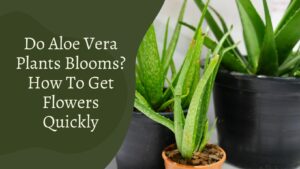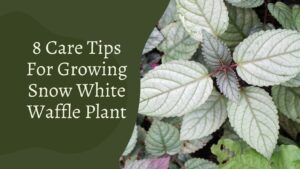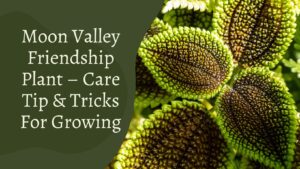
Angel plant care are difficult and every eagle plant lover is worried about that. Exotic Angel Plants are a type of hybrid foliage plant that comes in a range of colours and forms. These tropical plants are bred particularly to be produced as indoor plants and are grown in greenhouses. Because there are 400 different types of Exotic angel plant. Their care instructions provided here are broad. Your Angel’s demands for water and light may differ somewhat.
Exotic Angel plants are not restricted to a certain flora. Instead, it stands for a collection of plants such as the Chinese evergreen, Laceleaf, Dumb Cane, Dragon Plant, and Fig.
They’re all from the tropics and have been specially bred to survive inside. Exotic Angels are popular because they are easy to care for same like blue cohosh plant and are aesthetically beautiful. It goes without saying that maintaining an Exotic Angel plant inside is pretty simple. They may be hung as a cascading individual or preserved in pots.
Exotic Angel plants are well-bred houseplants. Exotic Angel is a brand name for the more than 400 types of houseplants created by Hermann Engelmann Greenhouses, Inc. during the course of the company’s 43-year history. Hermann Engelmann Greenhouses was purchased by Costa Farms in 2014, following the death of its creator Hermann Engelmann. Costa Farms promised to continue to support the Exotic Angel brand and expand on its tradition.
Angel plant types:
Splash Splish
During the early summer months, masses of white blooms with purple stripes and speckles lie above deep green foliage; once established, drought tolerant, good for borders, beds, and pots; remove old flowers to stimulate new growth.
The following landscape uses are recommended for Splish Splash Cranesbill:
- Planting in Large Numbers
- Edging on the Border
- Container Planting in the Garden
Silver Wings
Silver Wings Angel wing begonias, in particular, are perennial evergreen shrubs native to Brazil that may be cultivated as houseplants or outdoors in USDA zones 10 and 11. They’re a form of cane begonia with robust stems with visible joints that produce leaves and blooms. These lovely shrubs are recognised for their stunning, asymmetrical leaves, which resemble angel wings in form. These leaves are often dark green with a scarlet or purple underside and silver, cream, or white “polka dot” pattern. These leaves can grow to be as long as 6 inches.
‘Looking Glass’
Begonia ‘Looking Glass’ is a stunning Angel-wing hybrid Begonia with huge, elegant silver leaves with olive-green veins and cranberry undersides that grows in a cane-like shape. This gleaming silver mix combines superb beauty with a kind demeanour.
Begonia ‘Looking Glass’ may reach a height of 60cm and blooms from late winter to early spring. Because begonias are prone to root rot, you must constantly be careful not to overwater them. Also, while watering it, make sure the leaves are dry by pouring water straight onto the soil.
Angel Wing Begonias Grow Well in Pots
Angel wing begonias are pot-grown perennial cane begonias. They thrive in a variety of soils, but prefer a medium-quality, nutrient-rich environment. Furthermore, they prefer both direct and indirect light and do not require much water. You may plant them in any part of your house or yard and be proud of it. Angel wing begonias are resilient, but they need appropriate growth conditions to thrive. They require a lot of light and a little bit of shade. In order to grow, they also require humidity in their surroundings. Give angel wing begonias a reasonable quantity of water when cultivating them in your house.
What is the cause of the death of my angel Plant?
Over-watering, too much sunshine, low temperatures, dry air, and low humidity are all typical issues. Indoor begonias, on the other hand, are susceptible to fungal illness and bacterial leaf spot. Let’s look at how you can diagnose and resolve these problems.
Too much sunlight:
Avoid placing your angel wing in west or south-facing windows since the direct afternoon sun will be too harsh for it. Furthermore, north-facing windows will not supply sufficient light. If you don’t have access to an east-facing window, place under LED plant lights for 14–16 hours each day.
Temperatures Below Zero
Low temperatures are another reason your angel wing begonia may be dying. Temperatures below 55 degrees F (12 degrees C) might kill your plant permanently like purple waffle plants.
Humidity is low
Low humidity might cause your angel wing begonia leaves to become dry and brittle, as well as pale in colour (dry air). This begonia requires a modest amount of humidity. Here are some suggestions for increasing humidity in the vicinity of your plant: Use a spray bottle filled with lukewarm water set to the “mist” setting to spritz your begonia several times a week. You can spray everyday or even numerous times a day if your air is exceptionally dry if your home is centrally heated.
Place the plant on a handmade humidity tray (a tray filled with stones and water), making sure the pot’s bottom is never directly submerged in the water. Maintain a water level that is slightly lower than the stones.
Over-Watering
Over-watering is the most likely reason of your angel wing begonia leaves becoming brown or yellow. Too much water might also cause leaves to fall off. Only water your begonia after the top 1 inch of the potting media dries out for optimal results.
Simply insert your finger into the soil up to your first knuckle to test the soil moisture. Does the soil appear to be dry? If this is the case, thoroughly water the plant. It’s fine to wait another day if the soil is still damp. This easy test can help you avoid overwatering your begonia. Overwatering is exacerbated by planting angel wing begonia in huge pots. To avoid this, keep your plants in tiny containers.
Yeast Infection
Botrytis and powdery mildew are two fungal diseases that typically affect angel wing begonias. Here’s how to tell whether they’re having an effect on your plants:
botrytis – If your angel wing begonia leaves have tan patches and the plant is decaying at the base, it’s most certainly botrytis. Remove any sick leaves and start fresh plants from stem cuttings if feasible. With rooted cuttings, this disease is more prevalent. However, if you use a clean rooting media, you may avoid this.
powdery mildew – Powdery mildew is most likely the cause of white, powdery areas on angel wing begonia leaves. Remove any diseased leaves and encourage air circulation around the plants as soon as symptoms appear. Powdery mildew is more likely to affect older leaves than younger ones.
How do I revive my angel plant?
Exotic angel plants are susceptible to frost. They must be kept in a warm atmosphere with lots of light. It require around 8 hours of direct sunshine every day throughout the summer. They require 6 hours of direct sunshine every night in the winter. Bright indirect light is ideal for these plants. They despise being in the dark. If you reside in a chilly climate, you might wish to relocate your exotic angel plant to a warmer location.
To save your plant, follow these six procedures.
- Plant it in a new pot.
- Your plant should be trimmed.
- Trim back the leaves if there is root damage.
- Your plant needs to be moved.
- Your plant needs to be watered.
- Make sure your plant is getting enough nutrients.
The flower of angel plant:
The plant produces unusual trumpet-shaped blooms on a pendulous stem. The flowers are pendulous, hanging almost straight down, and can be white, cream, yellow, pale orange, or even pale pink in some varieties. The blooms are stunning, with a pleasant fragrance and a length of around 30 cm. The corolla is made up of five gently recurved points. The filaments of the stamens are attached to the corolla tube, and the anthers are basifixed and adherent between them, producing a small sheath around the style. The ovary is 2-locular, measuring around 5.0 x 1.5 mm, with a style length of 21.0–25.5 cm and a stigma that is elongate. Angel trumpet blooms can be single or double-flowered.
Why are my angel plant’s leaves falling off?
Because they are easy to angel plant care for, exotic Angel plants are popular houseplants. They give birth to lovely blooms. These plants, however, are vulnerable to freezing temperatures. It’s possible that a lack of light is causing your exotic angel plant to turn yellow. Make sure your exotic angel plant gets enough light. During the spring and fall months, it requires roughly eight hours of direct sunshine every day. It just need six hours of direct sunshine in the winter. If you live somewhere where it gets really cold in the winter, you may wish to relocate your exotic angel plant.
What Causes a Plant to Wilt and Curl?
Looking for symptoms of drooping leaves is the easiest method to know if your plant needs water. If it is thirsty, it will curl and get root rot. Your angel wing plant, on the other hand, does not have this problem. Other Begonia species are more vulnerable to cold air than this one. Throughout the day, it will require moisture and humidity. To put it another way, it’s not the Rex Begonia, but it’s a tropical bloom that requires more humidity than the Rex.
Angel Wing Begonias in a Shaded Growing Area
They prefer a shady location, but never compact the soil too hard. To avoid overwatering, tiny pots with drainage holes are recommended. They must be allowed to dry out between waterings and the soil must be allowed to dry out. The plant will turn yellow and lose moisture if this is not done. Angel wing begonias, unlike other begonias, are resilient and flourish in a broad range of conditions. Because they are frequently pot-bound, keep them apart from other houseplants in the same room. They also do nicely in a low-maintenance container, so don’t stress if you’re not sure. It will be OK in a somewhat humid atmosphere.
Basics of exotic angel plant care
It is the responsibility of the owner to ensure that all needs are addressed, even if a plant has been physiologically changed to be an indoor candidate.
The quantity of light they should be exposed to, water saturation, trimming, and other fundamental requirements are among them.
Soil for angel plant care
Based on the families represented in this brand, the majority of them require the soil to be wet but not saturated. If these plants are left in water for too long, they might get root rot. Well-draining, peat moss-based soils with a high organic content are the best choices. If you’re concerned that the soil isn’t accurate, we recommend searching up the specific species you possess.
Light for angel plant care
Indirect sunlight is preferred for Exotic Angel plants in general. Don’t be fooled by this, though. They do require sunshine in order to produce such bright blossoms. Although certain Exotic Angel varieties prefer direct sunshine, the group as a whole finds that partial sunlight is the ideal balance.
Watering for angel plant care
Exotic Angels behave best when provided modest amounts of water, regardless of the type you possess. This is subject to change based on a number of factors. Plants that are watered for the first time require more water than adults, and should be watered twice or three times each week. Once an Exotic Angel has reached maturity, weekly watering sessions are usually required. Consider examining the soil for dryness if it’s hot where you live. Later in the article, we’ll look into watering in more detail.
Temperature for angel plant care
You’ll want to keep the temperature between 16 and 21 degrees Celsius, which is rather easy to achieve indoors. Their main issue is when the ambient temperature drops too quickly or there is a sudden draught. Leaves will yellow if the temperature falls below 10 degrees Celsius. Extreme heat or if the air gets too dry are some things to be aware of. This may have a detrimental influence on your flora as well.
Humidity
It’s no wonder that Exotic Angel plants like to live in a humid environment, given their tropical roots. The average indoor humidity level is approximately 50%. For most Exotic Angel plants, this is an ideal level. Some types may necessitate more, so keep a watch on the leaves. If you see that they have begun to dry out, you may want to refrain from adding extra moisture.
Fertilizer for angel plant care
Adding fertiliser is a difficult task. Some plants don’t need the extra help, while others require it to produce brilliant blossoms. Exotic Angel plants don’t always require it, although they can be deficient in nitrogen, phosphorus, and potassium.
Once a month, a water-soluble fertiliser might be beneficial. Just be sure to start this feeding schedule right after watering and only if you detect active growth. Some species, such as the Dragon plant, are more particular about the fertilisers they need, so do your homework first.
Propagation
Exotic Angel plants may be propagated in a variety of ways, but the two most frequent methods are stem cuttings and water propagation. Of course, we strongly advise you to research the best propagation techniques for your Exotic Plant species. Growing a new plant from the parent individual might be difficult, depending on your level of understanding and experience.
Growth
Exotic Angel plants are recognized for being tiny in size, making them an excellent flora for most indoor plant aficionados. The biggest individuals, such as Snake plants and Pothos, are not all as small. These species may reach a height of up to 8 inches, which is on the bigger side for houseplants. Fortunately, you have the option of selecting a smaller plant if that is what you want.
Potting
The standard approach for transferring a flora to a larger pot is faster than what an Exotic Angel plant requires. These are more sensitive houseplants that should be introduced gradually. Set up a new pot that is only a few inches wider if you find that the roots and foliage are becoming crowded.
Allow time for your Exotic Angel to acclimate before transplanting it to a new pot and following the same instructions. You’re letting the houseplant to self-regulate, which prevents overall shoc.
Angel plant propagation
Stem cuttings are the simplest and most successful approach to propagate your angel wing begonia. This approach is best used in the spring, when the plant is just starting to grow. What you’ll need to do is follow the steps below.
- To begin, use rubbing alcohol to sterilise a pair of scissors.
- Choose a stem that is free of floral buds. Instead of producing roots, flowering stems will devote all of their energy to blooming. The stem you choose should be at least 2 – 3 inches long and have at least a pair of leaves.
- Above the growing node, cut the stem.
- Fill a container halfway with a substrate that drains quickly. Stem rot is a common problem with begonia cuttings.
- We recommend a combination of two parts sand, one part perlite, and one part peat moss to avoid this.
- Place the clipping in the potting soil and softly water it. To assist preserve humidity, place the pot in a warm area away from direct sunlight and cover it with a clear plastic bag.
- For the following several weeks, water the cutting sparingly until it establishes a root system. This will also help to prevent stem rot.
- After 4–6 weeks, your angel wing begonia cutting should be established and will most likely flower the following year.
Angel plant benefits:
There are several plant benefits.
Digestive:
Angelica is a bitter plant that is warming, decongesting, fragrant, and warming. It’s commonly used as a digestive aid and may be found in classic aperitif recipes. It aids in the stimulation of hunger as well as the relief of indigestion, bloating, and gas. The herb can also help with a sluggish liver. There is little scientific proof that angelic may help with digestive disorders. The studies that are currently available are out of date. The research also looked at the benefits of angelica when combined with other herbal remedies for digestive issues. While angelica may assist to alleviate gastrointestinal problems such as dyspepsia, additional research is needed to fully comprehend its advantages.
Irritable bowel syndrome has been treated with angelica and other herbs in several countries by alternative medicine practitioners.
Angelica and other herbal medicines “may be researched” for their function in the treatment of IBS, according to a review published in the World Journal of Gastroenterology.
Anxiety:
Anxiety: Angelica has an antianxiety effect similar to Valium, according to a recent Chinese study.
Menstrual:
Warming, calming, decongesting, and boosting blood flow are all benefits of the root, therefore it soothes menstruation cramps. It can also cause menstrual irregularities or help with PMS. Combine angelica, hibiscus flower, and rose petal for this purpose. It can also be used to alleviate migraines because of its circulation advantages.
Respiratory
Angelica has an expectorant impact on the lungs, which can help relieve asthma, cough, bronchitis, and cold or flu symptoms. It’s also been used to treat bladder infections and rheumatic diseases in the past. It can be used to reduce fevers as a hot diaphoretic tea.
Gastrointestinal:
Angelica root is commonly used to treat gastrointestinal issues in German children’s medicine. A stomach tea prepared with 20% angelica root, 40% gentian root (Gentiana lutea), and 40% caraway seed is used by German physicians (Carum carvi). The German Drug Codex, a supplement reference for pharmacists, lists angelica root.
Antiviral:
Angelica includes antiviral components that can help fight Herpes simplex 1 and Coxsackievirus B3, according to an article published in Food and Chemical Toxicology.
Nocturia
The desire to wake up from sleep one or more times to urinate is known as nocturia. Angelica’s possible usage as a therapy for condition was studied in a 2017 research published in the Scandanavian Journal of Urology.
Researchers treated 69 males aged 45 and up with a substance produced from the Angelica archangelica leaf. Patients were assigned to one of two groups. The herbal remedy was given to some of the participants.
The other people were given a placebo, which is a drug that doesn’t actually help. Nobody knew who got angelica therapy, and no one else did either. The people who took part in the study kept track of when they peed. Before and after the therapy, the diaries were looked at, too. People took the herbal medication and found that it was safe, but it didn’t help with their nocturia in general.
Conclusion:
Exotic Angel plants need the same long-term care as any other plant of the same kind, no matter how exotic. Even if there aren’t any brands of pothos, they are still pothos. From one grower to the next, the plant’s needs and how angel plant care are the same.
Even though exotic angel plants don’t need a lot of attention, if you meet the minimum requirements for your species, you’ll have a healthy plant with pretty leaves. It’s best to put the exotic angel plant in an area that gets a lot of sunlight. Take care not to spend too much time in the sun. Regularly use a spray bottle filled with water to mist the plant with a little water.

Hi This is Maria, We are a team of gardening enthusiasts with a passion for gardening. We have tried to bring you tips and advice enabling you to grow and maintain a healthy and beautiful garden. We Hope You Find it Useful.







